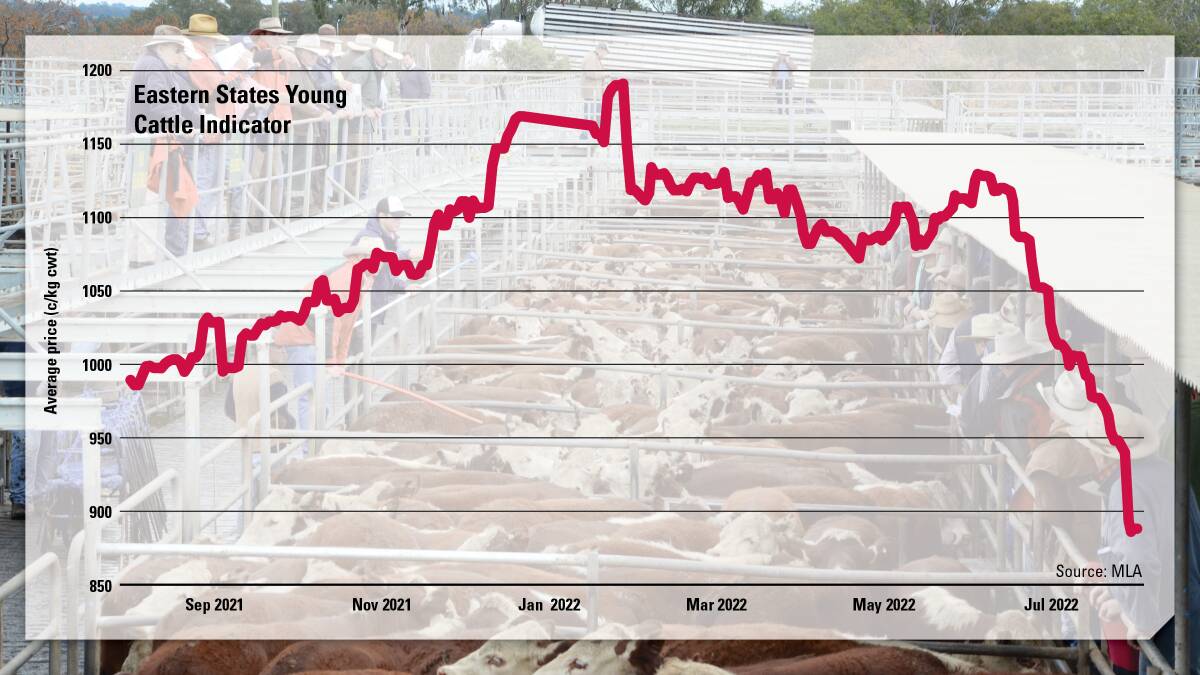
SPECULATIVE angst fuelled by foot and mouth disease fears is having an effect on the cattle market that could result in some fairly negative longer term consequences for producers.
Subscribe now for unlimited access to all our agricultural news
across the nation
or signup to continue reading
This warning has come from agents, analysts and industry leaders this week as the benchmark Eastern Young Cattle Indicator continues its downward spiral.
Analysts say while it's not uncommon for global events to trigger a strong degree of speculative volatility in finance and currency markets, it is rare in the cattle market.
Farm business decisions based on expected future prices become difficult when there is market price distortion of this kind.
Agents are urging cattle buyers and sellers to consider the fact foot and mouth and lumpy skin disease is not on Australia shores and the expert risk analysis still puts the chances of FMD arriving at less than 12pc.
Meat and Livestock Australia boss Jason Strong urged maintaining perspective and a long-term view when examining market drivers influencing the cattle market.
Clearly there was a heightened concern about the impact a potential incursion may have and that speculative angst was making its way to the saleyards, he said.
However, there were a number of other sophisticated and tangible market forces putting downward pressure on prices, he said.
On farm drivers include supply, mixed quality of livestock presented to market and the fact that the market is performing in typical winter fashion.
Meanwhile, in the processing sector, softer processor grids were coming on the back of multiple challenges including continued absenteeism rates due to COVID-19 and influenza, as well as reduced processor capacity due to labour shortages.
"As processors work through these challenges, there is reduced demand between buyers at the saleyards," Mr Strong said.
Indeed, at one point last week the percentage of EYCI cattle taken by processors dropped to less than 5pc.
These numerous drivers have been emphasised by analysts and agents over the past few weeks, who say no single factor is dominant in driving prices down.
However, they agree the extent of the fall has been unexpected and that has likely further fed into 'panic' around FMD.
"If people act on the premise FMD will arrive and we have the scenario of a large number of market participants withdrawing, the price behaves accordingly and that feeds into the fear further and it becomes somewhat of a self fulfilling prophecy," Thomas Elder Markets analyst Matt Dalgleish explained.
"Of course, the current situation is providing very good opportunity for those opting to go the other way."
Mr Strong said it was also worth noting that the price reduction was off an all-time high of 1,191 cents a kilogram carcase weight earlier this year, and the market was still sitting 22 per cent higher than the five-year average.
While National Australia Bank analysts believe there will be more downside from here, its forecast is for prices to remain above pre-2020 levels into next year.
NAB senior agribusiness economist Phin Ziebell said Australian cattle prices had been heavily detached from global fundamentals since the drought in NSW and Queensland ended in 2020.
"While seasonal conditions have been mostly supportive - southern frosts and northern floods notwithstanding - higher input and transport costs, rising interest rates, an uncertain global growth outlook and COVID-induced staff shortages at processors, have all contributed to weaker cattle demand," he said.
"That said, prices remain very high by historic Australian and current international standards."
ALSO IN BEEF: Links between cancer and red meat shot down


